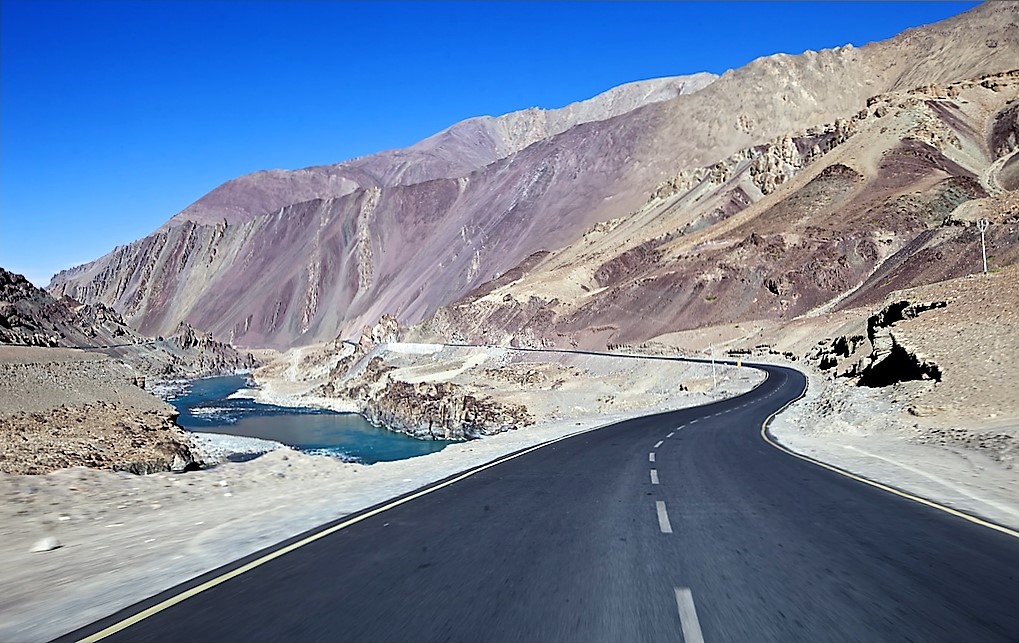One of the most treacherous and strategically vital road routes in the Himalayas has been completed, providing the military with an all-weather road access to north-eastern Ladakh.
The area had seen skirmishes during the 1962 India-China conflict and also recent standoffs like those in 2013 and 2014 around Depsang.
The 255-km Darbuk-Shayok-Daulat Beg Oldie (DS-DBO) section of the road between Leh and Karakoram Pass has been completed, sources said. Some 37 bridges have been built across various snow-fed rivers.
On April 20, the first-ever vehicle expedition comprising motorcycles completed its run from Leh to Karakoram Pass and back (around 1,000 km). The road from Darbuk onwards runs at an altitude of 14,000 feet or more through a jagged part of the Karakoram mountain range.
The last 235-km stretch of the road from Shyok to Karakoram Pass has no civilian population. Shyok, a hamlet comprising 25 families, is the last Indian village and civilians are not permitted beyond it. Building the DS-DBO section of the road was a key thrust area of the Ministry of Defence for this strategic northernmost corner of India — termed Sub-Sector North (SSN) by the military.
The road will help India’s efforts to dominate the Line of Actual Control (LAC) — the de facto border — and also areas abutting Aksai Chin (under Chinese control), Jiwan Nalla, Chip-Chap river, etc. The two armies have had faceoffs in 2013 and 2014 in the area over differing perception of the LAC.
En route to the Karakoram Pass is the DBO — an advanced landing ground used by the IAF. The DBO, located at 16,700 feet, is a flat plateau. It’s just 20 km short of the 18,726-foot-high Karakoram Pass that divides Ladakh and Xinjiang province of China. This provides for rapid deployment.
Eastern Ladakh shares a 826-km frontier with China and is geographically defined as the area from Karakoram Pass in the north to Demchok in the south-east.
A previous effort to build the DS-DBO section of the road (between 2000 and 2012) at a cost of Rs 320 crore had failed. The road alignment was too close to the Shyok river and had got washed away. This time, around 160 km of it is being re-aligned to keep it away from the water.
As of today, there is no commercial use of the Shyok-DBO section; however, Janet Rizvi in her book “Trans Himalayan Caravans”, published in 1999, says trade caravans between Ladakh and Kashgar (now in Xinjiang) were a regular feature till 1937. Trade was dominated by Punjabi merchants from Hoshiarpur, she writes.
The sensitivity of the Karakoram Pass was studied by Sir Francis Younghusband, a British Army officer and explorer, in the early 1900s. He feared a Russian invasion through the Karakoram Pass. But those fears have long gone — India and China have a rare settled boundary at the Karakoram Pass.
Dominating the LAC
- The 255-km Darbuk-Shayok-Daulat Baig Oldie (DS-DBO) section of the road between Leh and Karakoram Pass has been completed .
- Will help India’s efforts to dominate the LAC and areas abutting Aksai Chin, Jiwan Nalla, Chip-Chap river, etc
- A previous effort to build the DS-DBO section of the road (between 2000 and 2012) at a cost of Rs 320 crore had failed
Source: TI
Image Courtesy: TravelmyIndia
You may also like
-
IAF Aircraft Set Course For Exercise Eastern Bridge VII At Oman
-
IAF Set To Host The Indian Defence Aviation Exposition-II At Jodhpur
-
Dot Simplifies Approval Processes For Telecom Licenses And Wireless Equipment
-
Defence Secretary to co-chair 5th India-Philippines Joint Defence Cooperation Committee meeting in Manila
-
Simultaneous Launch Of ‘malpe And Mulki’, Fourth And Fifth Ships Of Asw Swc (Csl) Project
